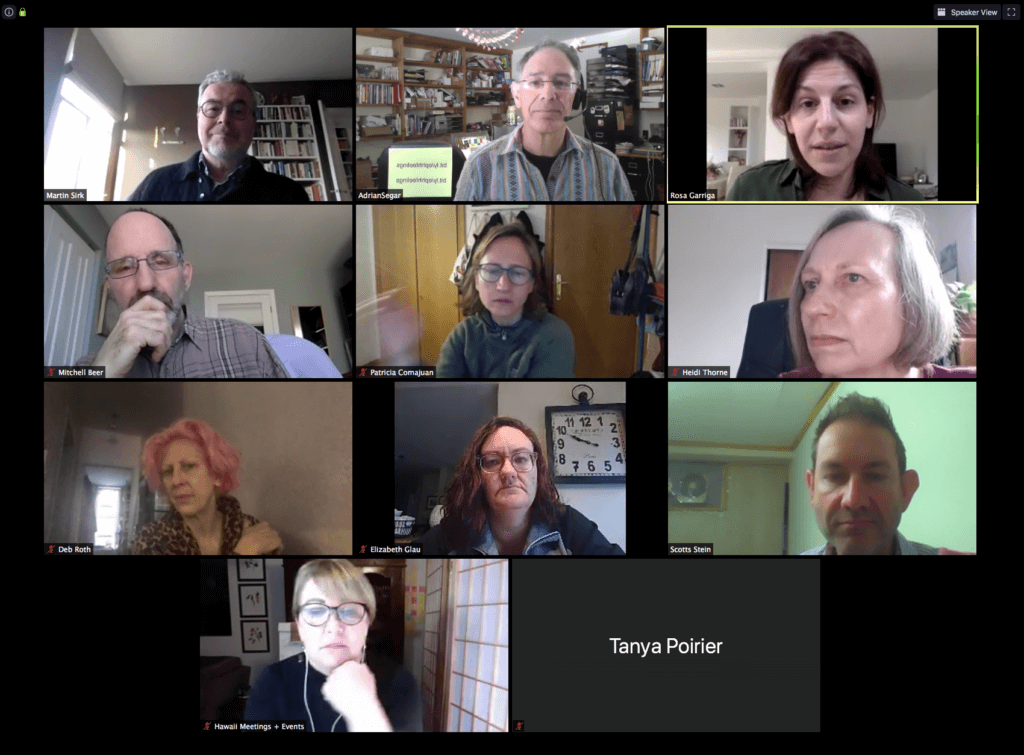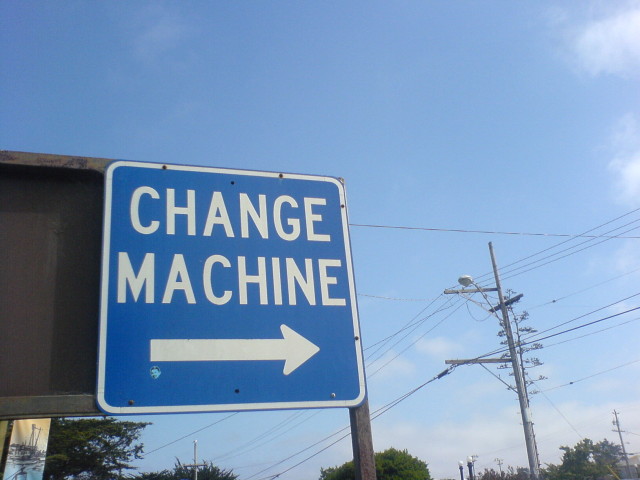How to support a community online
 How can you support a community online? Over the last few weeks, I’ve run numerous online Zoom meetings for support groups and local, social, and professional communities. In the process, I’ve learned a lot about what makes these meetings most useful for participants.
How can you support a community online? Over the last few weeks, I’ve run numerous online Zoom meetings for support groups and local, social, and professional communities. In the process, I’ve learned a lot about what makes these meetings most useful for participants.
I’m sharing what I’ve learned (so far) here.
Key takeaways
• Breakout room functionality is essential for your online meeting platform.
Small group conversations are the core components of successful online meetings. (If your meeting only involves people broadcasting information, replace it with email!) Unless you have six or fewer people in your meeting, you need to be able to efficiently split participants into smaller groups when needed — typically every 5 – 10 minutes — for effective conversations to occur. That’s what online breakout rooms are for. Use them!
• It’s important to define group agreements about participant behavior at the start.
For well over a decade, I have been asking participants to agree to six agreements at the start of meetings. Such agreements can be quickly explained, and significantly improve intimacy and safety. They are easily adapted to online meetings. (For example, I cover when and how the freedom to ask questions can be used when the entire group is together online.)
• Use a process that allows everyone time to share.
You’ve probably attended a large group “discussion” with poor or non-existent facilitation, and noticed that a few people monopolize most of the resulting “conversation”. Before people divide into small breakout groups, state the issue or question they’ll be discussing, ask someone to volunteer as a timekeeper, and prescribe an appropriate duration for each participant’s sharing.
• People want and need to share how they’re feeling up front.
I’ve found that pretty much everything important that happens at these meetings springs from people safely sharing at the start how they feel. They learn that they’re not alone. I ask participants to come up with one to three feeling words that describe how they’re feeling: either right now, or generally, or about their personal or professional situation. They write these words large with a fine-point permanent marker on one or more pieces of paper and share them, one person at a time, on camera or verbally. (Elaborations come later.)
• Sharing what’s working is validating, interesting, and useful.
In my experience, most people have made some changes in their personal and/or professional lives. Sharing these in small groups is a supportive process that’s well worth doing.
• Consultations are a powerful small group activity.
Set aside time, if available, for a few group consults on individual challenges. Ask for volunteers. They will receive support, and their small group of impromptu consultants will feel good about helping.
• Don’t forget to provide movement breaks.
Occasional movement breaks are even more important for online than face-to-face meetings. Participants can feel trapped sitting in front of their cameras. Schedule a break every 45 minutes.
• Check before moving on to a new topic.
If you are on video, ask for an affirmative sign (thumbs up or down), or use Roman voting. On audio, ask “Who has more to contribute to this?”
• Provide a set of tips and conventions for the online platform you’re using.
Here are mine for Zoom.
• Schedule time for feedback and/or a retrospective.
Key questions: What was this like? Do we want to do this again? If so, when, and how can we improve it?
Preparing for your community online meeting
Key information should be distributed appropriately well in advance of the meeting. Include it in a single online document, and create a descriptive URL shortened link (e.g. bit.ly/ephhfeelings). I suggest you share a short promo for your why? for the meeting, followed by this “complete details” link. Because many people don’t read the details until shortly before the meeting, resend your share closer to the time of the event.
I also like to display the link printed on a card visible in my video feed, so folks who have joined the meeting can catch up. Don’t rely on a chat window for this, since latecomers will not see earlier chat comments in most meeting platforms.
Here’s a sample of what you might want to include in your pre-meeting document for a 90-minute online meeting. My comments are in curly brackets {}.
Sample pre-meeting information document for community online meeting
[Date and start/end time of meeting]
[Time when the host will open online meeting] {I suggest opening the meeting platform at least 15 minutes before the meeting starts. This allows people, especially first-time users, time to get online}
The meeting starts promptly at [start time]
Please check out the following three links before the meeting:
Why you should attend [meeting title] {audience, rationale, agenda, etc.}
How to join this meeting {complete instructions on how to go online}
[Meeting platform] tips {make it easy for novices to participate — here are my Zoom tips}
Preparation
Please have a few blank pieces of paper and a dark color fine point permanent marker (several, if you are artistically inclined). Before we start, write large on one piece of paper where you’re calling from. On another, please write (or illustrate) one to three feeling words that describe how you’re feeling: either right now, generally, about your personal or professional situation — you choose.
Schedule
We will open the meeting at 11:45 am EDT.
Please join us before 12:00 if at all possible, so we can start together promptly. We’ll try to bring you up to speed if you join late, but it may be difficult if there are many already online and it will be disruptive for them.
The exact timings will depend on how many of us are present. This plan may change according to expressed needs. All times EDT.
11:45: Online meeting opens.
11:45 – 12:00: Join the meeting.
12:00: Meeting starts. Housekeeping. Where are you from?
12:05: Sharing our feelings words together.
12:10: Preparing for sharing what’s going on for you.
12:15: Sharing what’s going on for you in an online breakout room.
12:25: Group recap of commonalities and illustrative stories.
12:35: Preparing for sharing what’s helped.
12:40: Sharing what’s helped in the online breakout room.
12:50: Break — get up and move around! {Share your screen with a countdown timer displayed so people know when to return.}
12:55: Group recap of what’s helped.
13:05 Preparing for individual consulting. {Ask for a few volunteers.}
13:10: Individual consulting in an online breakout room.
13:25: Group recap of individual lessons learned.
13:35: Group feedback on the session. Do we want to do this again? If so, when, and how can we improve it?
13:55: Thanks and closing.
14:00: Online meeting ends.
Support your community online
Most online meetings do a poor job of maintaining participants’ attention. I’ve found that starting with a quick opportunity for people to share how they’re feeling effectively captures attendees’ interest. And using a platform and process that allows everyone time to share what’s important keeps participants engaged. You might get feedback like this…
“I just wanted to reach out again and thank you for the call today. What an incredible conversation spanning such significant geographical areas. The perspective we gain from discussion like today is priceless. I just got off of another call with [another community] and the vibe was completely different. While everyone was respectful, everyone’s overall sense of well being was generally pretty positive. And that’s where they wanted to keep it.”
—A participant’s message to me after an online meeting last week
Please try out these ideas! And share your suggestions and thoughts in the comments below.

